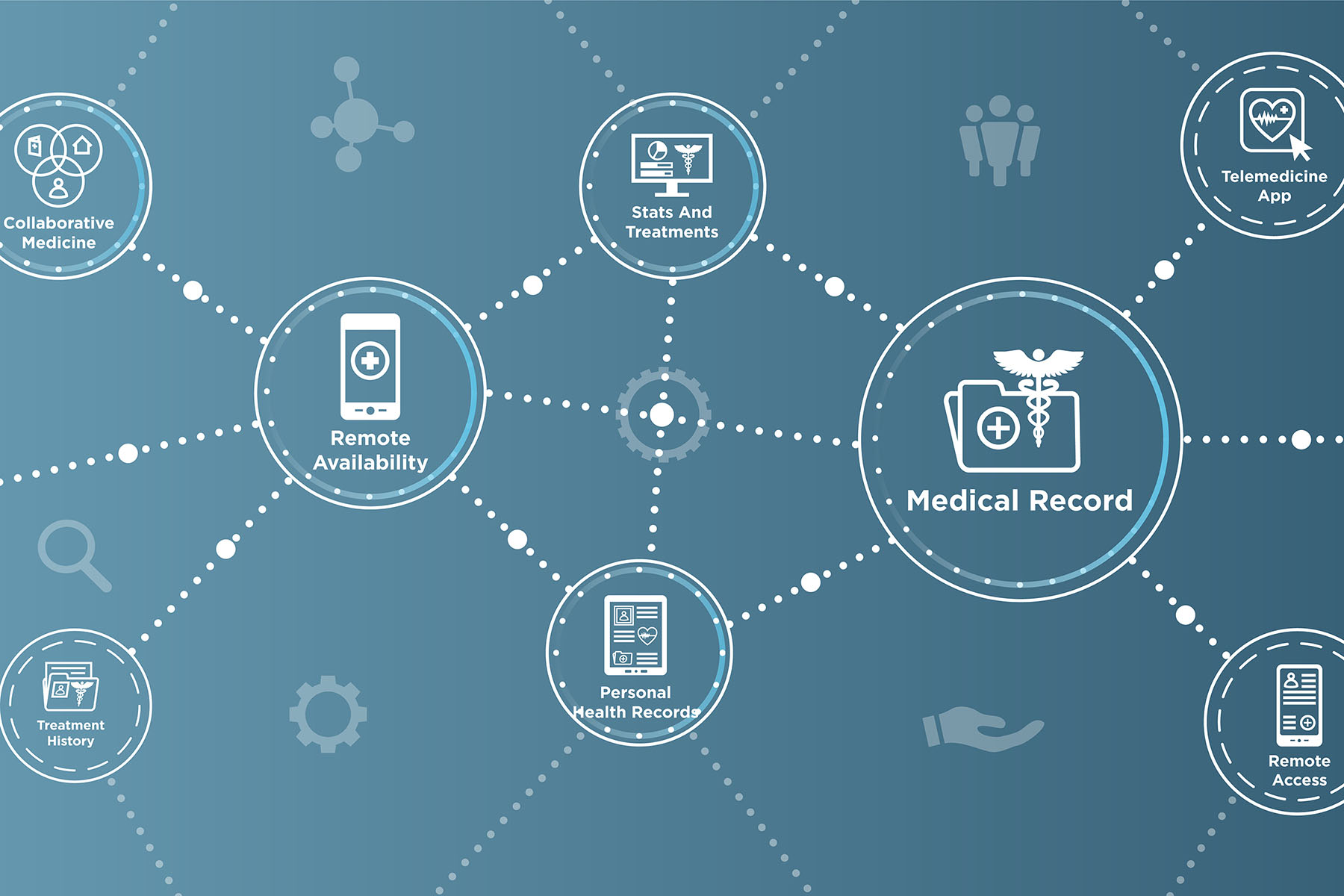During the COVID-19 pandemic, we saw healthcare organizations spend and scramble to implement numerous virtual care point solutions. The global healthcare IT market was valued at $280.3 billion in 2020 and is expected to reach $381.7 billion by 2025, growing at a compound annual growth rate of 6.7%.1 This increased technology spending has led to industry fragmentation, creating siloed data—which can leave providers with an incomplete picture of a patient’s health record—and an often-cumbersome experience for patients, leaving them to shoulder the burden of managing their own care.
Solving this will require reassembling these solutions to put the patient at the center of the healthcare experience. To accomplish this goal, organizations need to adopt a product mindset. In this article, we will explore how a product mindset can allow healthcare organizations to turn their technology spends into revenue-generating products all while providing effective and efficient care for their patients.
The Shift Toward Patient-centric Care
The traditional model of healthcare delivery, which was largely provider centric, is rapidly shifting toward a more patient-centric model. This change is driven by patients’ increasing desire to be active participants in their own care. Patients now demand greater access to their health information, desire more communication with their healthcare providers, and seek personalized care tailored to their individual needs. With advancements in technology and the rise of the digital age, patients now expect healthcare services to be as accessible and convenient as other services, such as banking or shopping. This means offering services such as online appointment scheduling, virtual consultations, and round-the-clock access to health information.
Patients increasingly expect a seamless healthcare experience in which all their health information is integrated and easily accessible. This includes information from different healthcare providers, as well as data from personal health devices (i.e., fitness trackers). This shift is illuminating a need for hospitals to have the capability and solutions to provide care to patients all the time—a large endeavor.
Developing these capabilities can be complex and costly. Healthcare organizations must navigate issues related to technology infrastructure, data security, and regulatory compliance. Furthermore, they must ensure these digital services are user friendly for all patients, irrespective of their digital literacy levels.
Addressing These Challenges with Product-led Growth
To meet evolving patient needs and expectations, healthcare organizations must develop and implement technology-based solutions. Whether it’s a patient portal, a telehealth platform, or a mobile health app, digital solutions can significantly enhance patient engagement, accessibility, and care integration. To get there, organizations will need to incorporate product-led growth into their patient engagement strategy.
Product-led growth is a go-to-market strategy that relies on product features, usage, and user experiences to drive customer acquisition, expansion, and retention. In the context of healthcare, this strategy underscores the importance of creating technology-based solutions that are not only effective but also engaging, intuitive, and user friendly—working to meet the ever-evolving needs of its consumers.
Incorporating a product-led growth strategy within your healthcare organization means building products that offer superior value to the end users—in this case, patients and healthcare professionals. The product should be easy to adopt, offer a clear value proposition, and contribute directly to improved health outcomes and efficiency in healthcare delivery.
Building these solutions, however, is not a straightforward process. It requires careful planning, considerable resources, and a deep understanding of both healthcare operations and patient needs. In the following sections, we outline a process that organizations can follow to transition from an idea to a fully productized digital healthcare solution.
Building Holistic, Technology-based Healthcare Solutions: From Idea to Productization
Healthcare providers understand the pivotal role of technology in delivering efficient and patient-centric services. With electronic medical records (EMR) as the system of record and emerging digital engagement technologies, there’s an opportunity to build holistic solutions for continuous patient care. Below is a guide on how to transition from an idea to a fully productized digital healthcare solution.
1. Identification of needs and definition of goals
Before embarking on product development, it’s critical to identify the needs you aim to address. This could involve pinpointing gaps in your current patient care system, surveying patients and healthcare professionals for input, or analyzing trends in the healthcare industry. Once you understand the needs, define the goals for your digital healthcare solution.
2. Conceptualization
Based on your needs and goals, brainstorm potential solutions. This could involve developing a patient portal, telehealth platform, mobile health app, or integrating artificial intelligence (AI) and machine learning (ML) into your services. Consider how these technologies can improve patient engagement, operational efficiency, and healthcare outcomes.
3. Market research and competitive analysis
Conduct thorough market research to understand the existing solutions and identify your competition. This will help you gauge the viability of your idea, understand what works and what doesn’t, and carve out a unique proposition for your product.
4. Prototyping and user testing
Create an initial prototype, or minimum viable product, of your solution. This should be a simple version that incorporates the core functionality of your product. Test this prototype with a select group of users (patients and healthcare professionals) and gather feedback. Ensure the product or solution is providing value to the end users.
5. Refinement and development
Use the feedback from user testing to refine your prototype. Then move into the full development phase. This includes designing the user interface, developing the back end, and integrating with an existing EMR system or other technologies. Ensure the product is compliant with healthcare regulations and has robust security measures in place.
6. Pilot implementation
Before a full-scale launch, it’s prudent to implement a pilot project. Choose a specific department or service line and use the digital solution in the real-world setting. Monitor the implementation closely, troubleshoot any issues that arise, and gather feedback from users.
7. Review and iterate
Evaluate the success of your pilot project against the goals defined at the outset. Use the insights gained from the pilot implementation to further refine your product. Healthcare technology solutions often need to evolve based on changing needs and user feedback, so a culture of continuous improvement is key.
8. Full-scale deployment and continuous support
Once you’re confident in the effectiveness and reliability of your solution, proceed with a full-scale deployment. Remember, launching the product isn’t the end of the process. Provide continuous support to resolve any technical issues and training to ensure users can effectively use the product.
9. Monitor, evaluate, and update
Once the product is live, regularly monitor its performance and collect user feedback. This helps you understand how well the product is meeting its objectives and where further improvements can be made.
Moving from a technology-based healthcare solution idea to productization is a complex but rewarding process. With a clear strategy, a product-mindset approach, and a patient-centered lens, healthcare organizations can leverage technology to deliver better and more efficient care to their patients and consumers.
Patients Need Healthcare Companies to Step Up
In conclusion, the advent of technology in healthcare is an opportunity to not only improve operational efficiency but also to significantly enhance patient experiences. The changing landscape of patient needs and expectations necessitates the evolution of healthcare organizations toward a more patient-centric, accessible, and integrated model of care.
Creating holistic, technology-based healthcare solutions is not without challenges, from understanding and addressing varied patient needs and ensuring interoperability of systems to meeting regulatory and data security standards. However, with a well-defined process, these challenges can be navigated effectively.
It’s essential for healthcare organizations to recognize that the journey doesn’t end with product deployment. Constant monitoring, evaluation, and refinement based on user feedback are crucial for the sustained success and relevance of these digital solutions.
As healthcare organizations embark on this transformation journey, it’s important to keep the focus firmly on the ultimate goal: enhancing patient care and outcomes. By leveraging technology and fostering a culture of continuous improvement, healthcare companies can build more holistic, technology-based solutions that truly serve patients better, all the time. The future of healthcare is undoubtedly digital, and those who embrace this reality will certainly lead the way.
References:
1. MarketsandMarkets, “Polyols Market by Type, Application, End-use Industry, and Region – Global Forecast to 2027,” December 2022. https://www.marketsandmarkets.com/Market-Reports/polyols-market-725.html.
Additional contributions to this article were provided by Vincent Attonito, Technical Sales Manager, Deloitte Consulting LLP and Kate Pacheco, Senior Consultant, Deloitte Consulting LLP.









